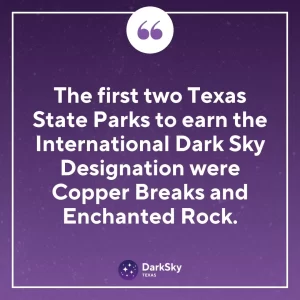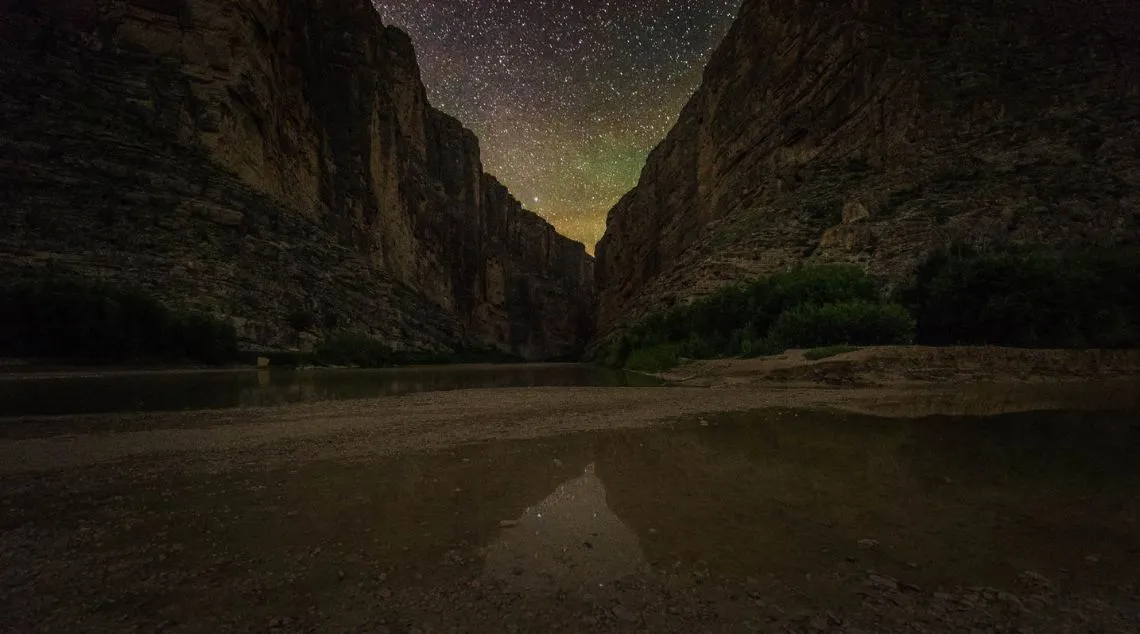Texas has always had a “larger-than-life” quality—especially when it comes to its natural landscapes. Its expansive deserts and warm beaches offer enough space to lose one’s gaze across the horizon. As sunset approaches, rocks and sand turn orange, then crimson, and finally settle into a deep purple.
But after sunset, we get to see the deepest and most exhilarating layer of Texas skies. Few parts of the world offer such rich potential for astronomers and nature lovers to gaze at an eternal and unblemished canvas. Fortunately, many parks and reserves across the State now recognize the importance of dark skies as an essential part of the heritage they must protect.
Which Parks Are Going Above and Beyond?
A National Park’s purpose has always been to preserve the natural world in its most pristine form. Protected from sprawling suburbs or busy highways, they were always a top destination for anyone looking for the darkest nights.
It was only a matter of time before the value of dark skies became a goal. Across Texas, over 10 parks, reserves, and natural areas are now certified as International Dark Sky Places. This displays their commitment to protecting their lands from light pollution and to educating the public about the importance of responsible outdoor lighting.
So, how did these beacons of darkness come about?

The Pioneers
The first three Texas parks that earned an International Dark Sky Park designation were Big Bend National Park, Copper Breaks State Park, and Enchanted Rock State Natural Area all between 2012 and 2014.
The first one is one of America’s most famous backpacking trails, nestled right between the country’s southern border and the “Bend” of the Rio Grande River. Remote and largely flat, this park offers over 3,000 km2 of desert trails, and it is currently the only cross-border “Darkness Oasis” in the world.
Meanwhile, the Copper Breaks State Park is a much smaller collection of lakes and fractures with a beautiful view of the universe. Copper Breaks staff and volunteers had been fostering the naturally dark sky there and sharing it via night sky programs for visitors since 1996 – long before many other places thought about protecting the night as part of protecting the land.
Enchanted Rock State Natural Area was blessed with some of the darkest night skies in Central Texas. In addition, it was privileged to have a team of supporters who brought its outdoor lighting into compliance, got adjoining landowners on board with better lighting, and established excellent night sky and light pollution reduction educational programming.
The Idea Spreads
Over the next decade, many more protected areas joined Dark Sky International to make light pollution one of their priorities. Examples include:
- South Llano River State Park
- Devils River State Natural Area
- Black Gap Wildlife Management Area
These are all ecologically sensitive areas, and many were chosen specifically to provide a haven for rare wildlife species and ecosystems. By acknowledging dark skies as a quintessential part of these ecosystems, we can safeguard starry skies for future generations.
Why is Darkness Important for Nature?
Plant and animal species often rely on the sun (and the lack of it) to regulate their life cycles. Whether insects only pollinate at night or birds follow a constellation across continents, night skies have been present and quietly aiding the balance of nature.
Light pollution threatens the delicate webs that keep these species in check. Small predators get dazzled by lights, and plants fail to prepare for frost due to skyglow. To protect them, rangers and naturalists must see darkness as part of their stewardship. But we also need the help of regular people like you, who can help ensure we continue educating the public about this mission.


